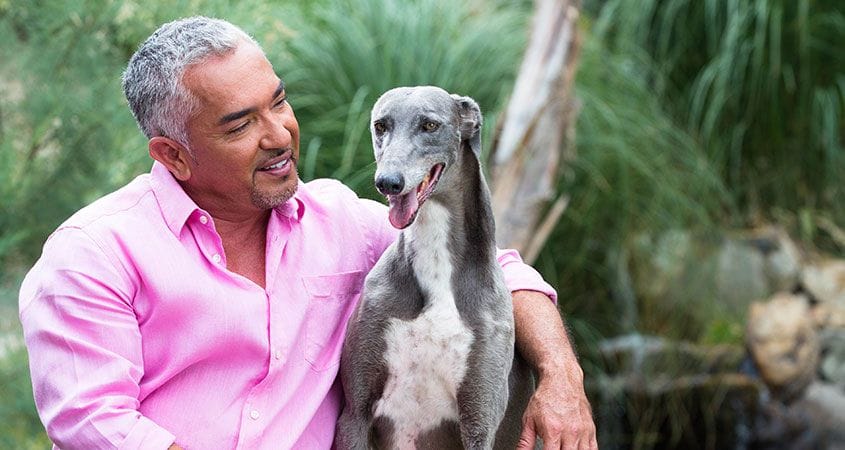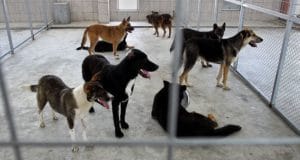By Cesar Millan
Recently, I was given the chance to see a documentary called 100,000. It is directed by Juan Agustín Márquez and shows the tremendous problem with stray and abandoned dogs in Puerto Rico. The name of the film refers to the estimated number of homeless dogs living in the streets of Puerto Rico. The documentary will bring tears to your eyes when you see the horrible conditions these dogs live in. The fact that Playa Lucia is now called Dead Dog Beach tells you a lot about what things are like for the satos in Puerto Rico.
In Los Angeles, a campaign called NKLA–which stands for No Kill Los Angeles–has used billboards and other campaigns to promote adoption and spaying and neutering and reduce the rate of euthanasia in animal shelters. In 2014, the kill rate at the Los Angeles Animal Services’ shelters was 25 percent, a record low. NKLA hopes to lower it to 10 percent. In Puerto Rico the kill rate in shelters has been estimated as high as 97 percent. So you can see there’s a huge problem in Puerto Rico, but it could happen everywhere.
The sad thing is the dogs who are killed by injection in the shelters may be the lucky ones. As you can see in 100,000, the dogs who have been abandoned in Puerto Rico have terrible lives which end terribly. Starved to death. Struck by cars. Thrown out in the trash. Diseased. Tortured. They are abused and have rocks and bottles thrown at them. People come to Dead Dog Beach with their guns and use the dogs for target practice. In the film, they show a sato saved from a trash can that was about to be destroyed by a garbage truck and a Chihuahua that was rescued after its owner buried it alive in a can. And it talks about the Barceloneta Massacre, where 80 dogs were thrown to their deaths over a bridge. No one was convicted of the crime.
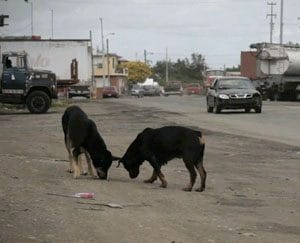
So how did things get this way and what can be done? They speak about that in the movie, and in fact, it’s the last line. There are three things to remember: spay and neuter, spay and neuter, and spay and neuter. And if you know me, you know I’ve said it a lot more than three times and I’m going to say it again now.
Backyard Breeders
The problem in Puerto Rico has been caused by a number of factors, and these aren’t problems that exist only in Puerto Rico, but everywhere. One thing the documentary brings up is backyard breeders. A couple of the people in the documentary talk about how they use their dogs to produce litters of puppies to sell. It sounds like fast money and in economically disadvantaged areas, in Puerto Rico and around the world, it’s almost too tempting to pass up. The problem is, when the puppies don’t sell, they often get abandoned. The documentary shows puppies who haven’t even been weaned abandoned on Dead Dog Beach or worse.
Reluctance to Neutering
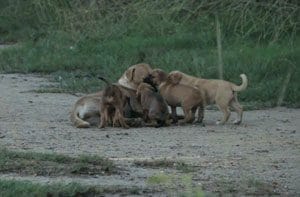
Another thing the documentary shows is the reluctance of men to neuter their male dogs. I am embarrassed to say as a man, and as a Latino man, that this seems to be a common attitude in our community. This idea that neutering your dog makes it less of a man is ridiculous. It’s not a man—it’s a dog! By not neutering your dog, you may make yourself feel more like a man, but you’re not doing anything for the dog.
The combination of backyard breeding, lack of spaying and neutering, and abandonment creates a perfect storm for the kind of overpopulation that has taken over Puerto Rico and is growing in the rest of the United States. Stray and abandoned dogs are reproducing faster than we can find homes for them and if spaying and neutering doesn’t increase dramatically, we are going to see the problem get completely out of control.
Canine overpopulation is an issue in Puerto Rico, 500 dogs are euthanized every day; and in the United States, 5 million cats and dogs are euthanized every year, according to the Humane Society. And that number doesn’t include the deaths of animals on the street from disease, exposure, and abuse.
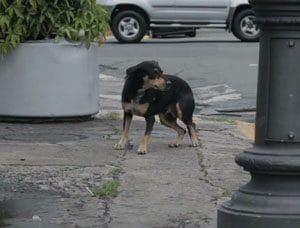
We need to work together to find solutions to help these animals. There are many organizations working to save the satos in Puerto Rico and the strays of Los Angeles, and there are countless other ways you can get involved in helping to solve this international crisis. Please keep visiting CesarsWay.com as we will try and bring more information to you about how you can help.
One of the most affecting images to me in 100,000 is a scene in a Puerto Rican shelter where we see a euthanized dog’s body in a trash bag being placed in a large industrial trash bin. Later we see the bin filled with these bags. Dogs are not trash. We can do better.
To see a preview of 100,000 and watch an interview with the director Juan Agustín Márquez, click here.


